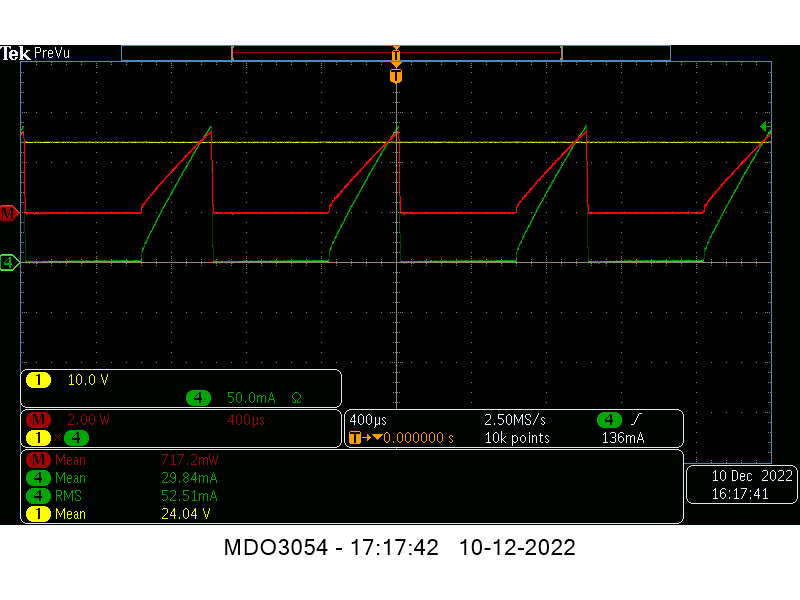Itsu
posted this
12 December 2022
Quoting:bigmotherwhale
Unfortunately Itsu all that scope shot shows is a rediculously slow charging of an inductor and a normal tranformer action, and looking at your setup its plainly obvious why, the 1 ohm resistor in the supply being a blatantly obvious reason for one.
We are not looking for LC ressonance, of course that will give you lower amp draw, energy is being returned to the supply.
You need to go back to the basics, no ammount of coil winding will help, I can get a sawtooth wave using an off the shelf common mode choke. With a pretty dire switching arangement.
You are attempting to measure something you havent even got by the looks of it.
you have a good switch board, see how much current you can get through a normal resistor in what rise time, your slope should be in the nanoseconds, once you have that move on to driving an inductor, you may need to use a snubber network for a clean pulse.
You want your pulse into the core to kick like a mule, there is no need to get any kind of saturation, not like you could saturate one of these cores in a million years with a setup like this.
Reduce the input duty cycle to a few % the freqency doesnt matter at this stage, only duty cycle, start low 1 - 10khz
I hope this helps, as it seems your trying so hard with these expensive toys, you have missed the key points.
BMW,
Thanks for your input.
You seem to react on both my Jagau replication and my general ZPM replication, allow me to split them here for now.
First the Jagau replication.
That "rediculously slow charging of an inductor and a normal tranformer action" is exactly the same as the current shape shown in Jagau his screenshot, as that is what i replicated.
And NO, the 1 ohm resistor in the supply can NOT be the "blatantly obvious reason" because as i mentiond before, i only use the 1 Ohm csr to double check my current probe.
There is no 1 Ohm csr in the circuit.
I used the same 120V / 4W bulb as Jagau and that is causing this "rediculously slow charging" current shape as with the normally used 12V 5W and 12V 21W bulbs its square shaped.
Concerning the general ZPM replication.
You say we are NOT looking for LC resonance, but i think that is just the whole point of the ZPM, we need to be in LC resonance, look at the original ZPM thread from Fighter, there you see all kind of resonance like signals (the Graham Gunderson signal is it already called).
OK about the pulse switch time, i can see it should be fast / sharp, but i use what Fighter has used, so i should have about the same fast / sharp pulses as he has.
I do agree about the saturation of the core, i tried to saturate it, but i can't, so it will probably not be needed to get the effect.
I will rewind my coils to 150 / 300 turns and start over again with my experiments and low duty cycle.
Thanks Itsu







